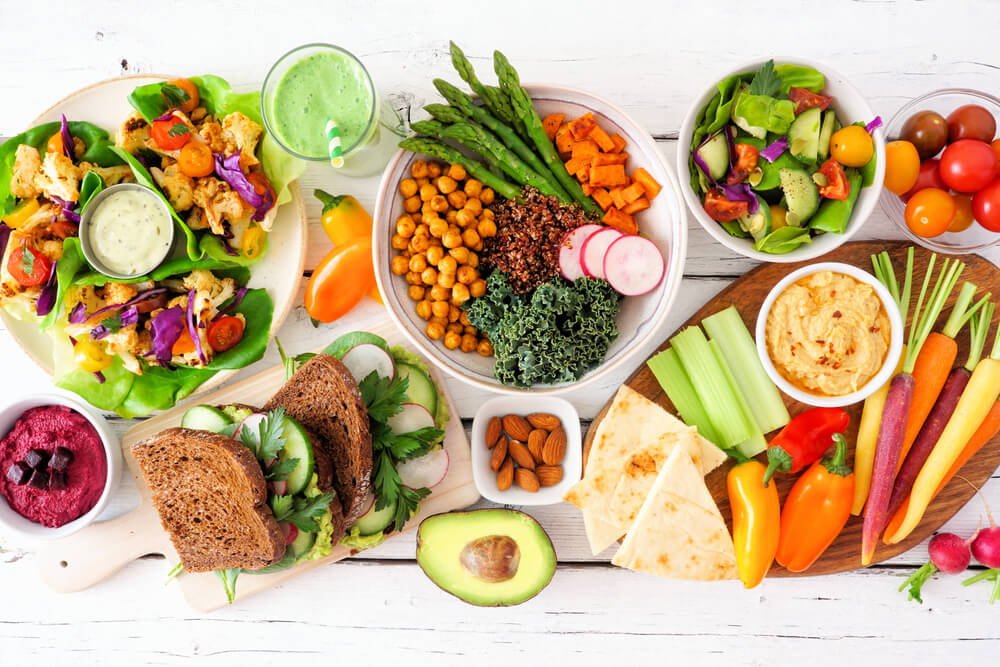The right diet can play an important role in not only speeding up healing but also reducing the risk of infection and ensuring your new hair grafts thrive. By focusing on nutrition and healthy lifestyle habits, you give your body the tools it needs to repair itself and achieve the best possible results.
Of course, our Este Medical advice can apply to other cosmetic surgeries as well, since boosting immunity, improving blood flow, staying hydrated, and getting enough rest are all essential parts of recovery. At Este Medical in Turkey, our team of hair and body experts has decades of experience guiding men and women on how to recover quickly and safely after hair transplant surgery.
Take a look at our top tips for hair transplant sleep recovery!
Why Diet & Nutrition Matters After Hair Transplant
What you eat, how often you eat, and how much rest you get after a hair transplant surgery directly impacts your recovery and the survival of your new hair grafts. At Este Medical Turkey, we know from years of experience that diet and nutrition are critical parts of healing after any cosmetic surgery, especially a hair transplant.
The reason is simple: food is fuel for healing. A balanced diet rich in protein, vitamins, minerals, and fluids provides the building blocks your body needs for tissue repair, cell regeneration, and immune system support. Protein, for example, is essential for creating keratin, the structural protein that makes up hair strands. Vitamins like C and D help stimulate collagen production, boost immunity, and support healthy skin and scalp function, while minerals such as zinc and iron are vital for wound healing and strong follicle development. When your body has the right nutrients, recovery is faster, and infection risk is significantly reduced.
Nutrition also plays a direct role in the hair growth cycle. After a transplant, new hair grafts are resting, finding their anchor and settling before growing new hair. A nutrient-rich diet encourages the shift into the active hair growth phase, helping follicles produce stronger, thicker hair over time. Omega-3 fatty acids, B vitamins, and antioxidants can all help improve circulation, reduce inflammation, and supply oxygen and nutrients to the scalp — creating the ideal environment for hair graft survival and long-term hair growth success.
In short, eating well after a hair transplant doesn’t just protect your recovery — it also improves your hair regrowth results. By giving your body the right fuel, you’re not only reducing complications but also setting the stage for healthier, more resilient hair in the months and years ahead.
Key Nutrients for Recovery Post-Surgery
After a FUE or DHI hair transplant, your body works hard to repair scalp tissue, nourish hair grafts, and stimulate new hair growth. Supplying it with the right nutrients makes all the difference in how quickly and smoothly you recover. Here are the essentials to focus on:
- Protein: The Building Block of Hair
Protein is essential for tissue repair and for producing keratin, the main structural protein in hair. Lean meats, fish, eggs, beans, and lentils provide the amino acids your follicles need to grow strong, healthy strands.
- Vitamin C: Collagen and Immune Support
Vitamin C plays a vital role in collagen production, which supports wound healing and strengthens the scalp. It also boosts immunity, helping lower the risk of infection. Citrus fruits, berries, peppers, and leafy greens are excellent sources. - Iron and Zinc: Wound Healing and Follicle Health
Iron delivers oxygen to your cells, while zinc supports tissue repair and strengthens hair follicles. Together, they promote faster recovery and long-term hair survival. You can find them in lean red meat, spinach, pumpkin seeds, and shellfish. - Omega-3 Fatty Acids: Circulation and Anti-Inflammatory Benefits
Omega-3s improve blood flow to the scalp and reduce inflammation, creating the perfect environment for graft survival. Sources include salmon, walnuts, chia seeds, and flaxseeds. - Vitamin D and B Vitamins: Energy and Growth Support
Vitamin D helps with immune function and hair follicle activity, while B vitamins (such as biotin and B12) boost energy production and scalp health. These nutrients can be found in dairy, fortified cereals, eggs, and fatty fish.
Supplying your body with these types of nutrients after hair surgery gives your scalp the tools it needs to heal quickly and produce healthy, resilient new hair.
Best Foods to Eat After Having Hair Transplant
Eating the right foods after your procedure helps support healing, reduce inflammation, and promote hair regrowth. Focus on nutrient-rich options that provide protein, vitamins, minerals, and healthy fats:
- Lean Proteins: Chicken, turkey, fish, eggs, and legumes supply the amino acids needed for tissue repair and strong hair growth.
- Fruits and Vegetables: Citrus fruits, berries, leafy greens, bell peppers, and cruciferous vegetables deliver antioxidants, vitamin C, and other nutrients essential for immune support and collagen production.
- Whole Grains: Brown rice, oats, quinoa, and whole-wheat bread provide steady energy and B vitamins to support cell repair and overall recovery.
- Healthy Fats: Avocados, nuts, seeds, and olive oil reduce inflammation, improve circulation, and supply fatty acids important for scalp health.
- Hydration: Water is essential for recovery. Herbal teas, broths, and fresh fruit juices can also help maintain hydration and support nutrient absorption.
- Dairy and Fortified Alternatives: Milk, yogurt, and cheese — or fortified plant-based alternatives — offer calcium, vitamin D, and protein to support bone and tissue health.
Incorporating these foods into your post-transplant diet provides your body with what it needs to heal efficiently, protect your hair grafts, and encourage strong, healthy hair growth over the months ahead.
Going abroad for a hair transplant is a big deal, especially if it’s your first time traveling for a cosmetic procedure. At Este Turkey, we’ve helped thousands of international clients through every part of the process, so you can feel confident, prepared, and supported. This handy travel guide has everything you need to know for packing for your hair grafting procedure in Turkey — What to Pack for Your Hair Transplant Trip to Istanbul.
Plan Your Hair Transplant Recovery with Confidence
Now you know how to plan a post-hair transplant diet that is an essential part of your hair graft aftercare, helping to accelerate recovery and protect your results. At Este Medical Turkey, our expert team provides full support before and after your hair grafting procedure, ensuring every client feels confident, prepared, and cared for.
If you’re considering a hair transplant in Istanbul, Turkey and want a complete plan tailored to your hair restoration needs, our specialists are ready to guide you. Contact Este Turkey and book a hair loss consultation today!
























